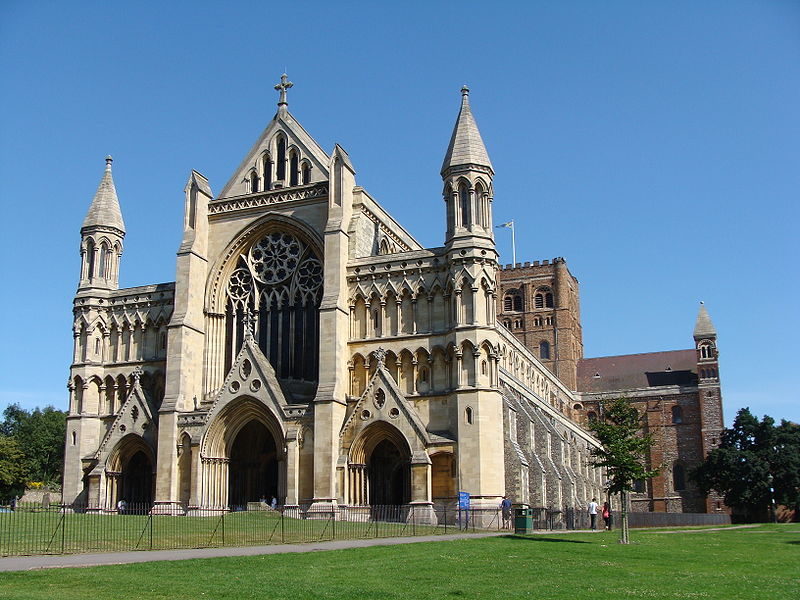St Albans
Romans Martys and Pygmalion
St Albans is well known as a place of martyrdom of the Roman who gave the town its name. It is also known as the sight of a battle between Boadicea and the Catuvellauni tribe against the Romans in which she burned the town down although she was later killed in battle herself.
The Romans rebuilt the town naming it Verulamium, it was improved and the city grew and prospered under Roman rule to about 400 A.D.
It is ironic perhaps that the man the Romans killed is responsible for the eventual success in the continuation of St Albans as a town.
St Albans although a thriving market town has been witness to some of the most striking events in English history from the martyrdom of St Alban the battles between the Yorkist’s and Lancastrians to the dissolution of the monasteries by Henry VIII.
St Albans Cathedral was begun in 793 in honour of St Albans Britain’s first Christian martyr over the years it has been altered and changed with easily recognisable Norman influences the round headed arches and Windows, which form part of the nave, which is the longest in Europe.
St Michael’s Church which was founded during the Saxon reign and like the cathedral additions have also been made inside there is a monument to Sir Francis Bacon whose father owned Gorhambury house which was a large Tudor house nearby.
There are Roman artefacts and remains to be seen all over St Albans including a shrine to the martyr. Perhaps the most amazing event of English history that took place was the barons meeting at the cathedral to draft the Magna Carta that King John was then forced to sign.
The famous local boy of St Albans was the controversial playwright and author George Bernard Shaw he lived near St Albans at Ayot St Laurence now called Shaw corner one of Shaw’s most popular works is Pygmalion which the musical my fair Lady is based on.
Be sure to visit the Ye olde fighting Cocks Inn reputedly the oldest in England this octagonal shape building was originally a dovecot of the old Abbey and is now a pub.
Activities in St Albans
House and Gardens
Hatfield House - Where the city ends and the country begins
Visit abcbritain's profile on Pinterest.




